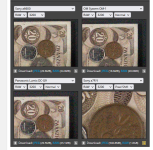
This is probably the first meaningful comparison I have seen. The video talks about some technical details that exist between the cameras, but for me the most important thing to hear was "No Winner - they are just so b..... good both of them". AF was seemingly very similar for stills and seemingly mostly with video. Some other tech details for video that In my personal opinion would not make me chose one over the other. The person talking talked about maybe an 90% success with the AF. In really difficult situations, AF could fail on both.
 www.43rumors.com
www.43rumors.com
Niels
G9ii vs OM1 UPDATED – REAL-WORLD comparison (on safari!) – 43 Rumors
 www.43rumors.com
www.43rumors.com
Niels






